
The Evolution of Graffiti Art in Japan
“Unleash the vibrant spirit of Japan through graffiti art.”
Introduction
Graffiti in Japan has a rich and complex history, blending traditional artistic influences with contemporary urban expressions. From its early beginnings as a form of political protest to its current status as a recognized art form, graffiti in Japan has evolved and diversified over the years. This introduction aims to provide a brief overview of the cultural significance and development of graffiti in Japan.
Sed egestas, ante et vulputate volutpat, eros pede semper est, vitae luctus metus libero eu augue. Morbi purus libero, faucibus adipiscing, commodo quis, gravida id, est. Sed lectus. Praesent elementum hendrerit tortor. Sed semper lorem at felis.

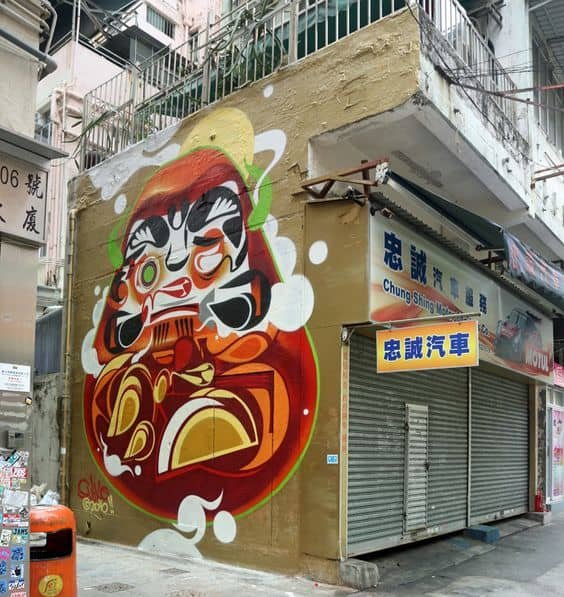
Graffiti, once considered a form of vandalism, has evolved into a respected art form in many parts of the world. Japan, known for its rich cultural heritage and artistic traditions, has also witnessed the transformation of graffiti from an act of rebellion to a recognized art movement. The evolution of graffiti in Japan is a fascinating journey that reflects the changing attitudes towards this expressive medium.
In the early days, graffiti in Japan was primarily associated with delinquency and gang activity. It was seen as a destructive act that defaced public spaces and disrupted the harmony of the urban landscape. However, as the country embraced Western influences and opened up to global trends, the perception of graffiti began to shift.
One of the key factors that contributed to the evolution of graffiti in Japan was the emergence of street art festivals and events. These gatherings provided a platform for artists to showcase their skills and creativity in a legal and sanctioned manner. The popularity of these events grew rapidly, attracting both local and international artists who were eager to leave their mark on the Japanese urban landscape.

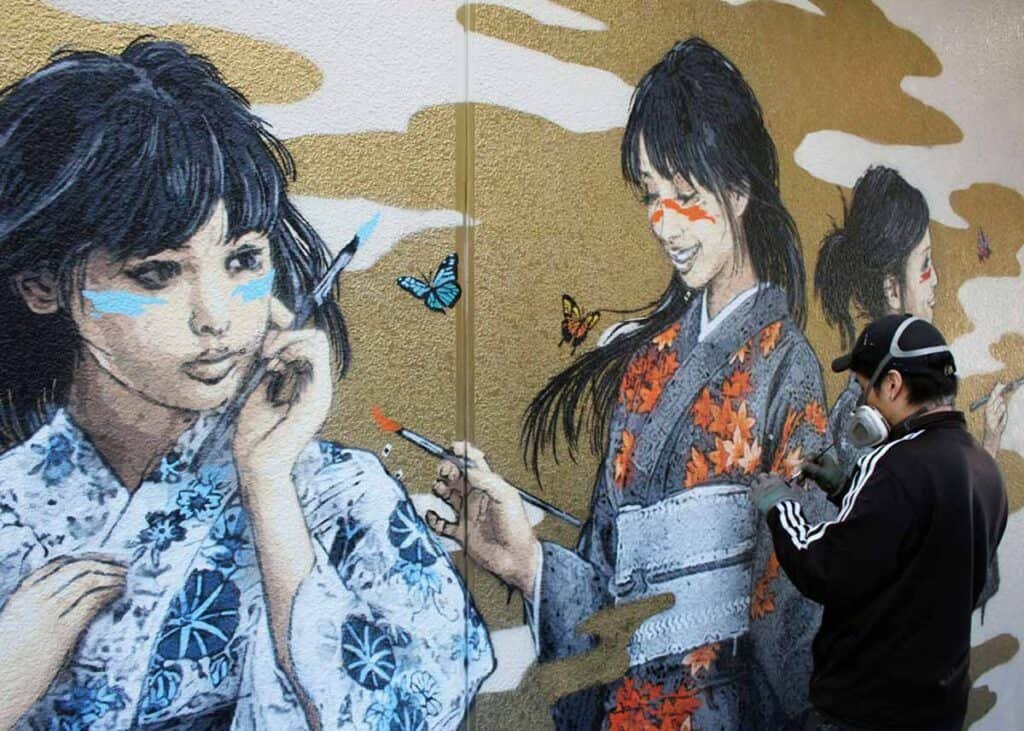
As the street art scene flourished, so did the appreciation for graffiti as a legitimate art form. The intricate and vibrant murals that adorned the walls of cities like Tokyo and Osaka started to be seen as valuable contributions to the cultural fabric of Japan. The once-dismissed graffiti artists were now celebrated for their ability to transform mundane spaces into captivating works of art.
Another significant factor in the evolution of graffiti in Japan was the influence of traditional Japanese art forms. Artists began incorporating elements of calligraphy, manga, and ukiyo-e (woodblock prints) into their graffiti pieces, creating a unique fusion of old and new. This blending of styles not only added depth and complexity to the artwork but also helped bridge the gap between traditional Japanese aesthetics and contemporary street art.
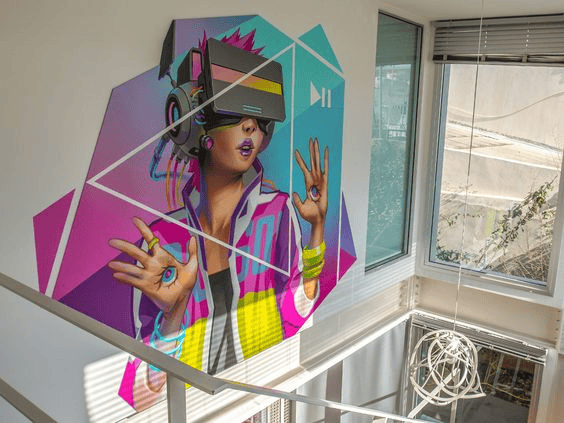
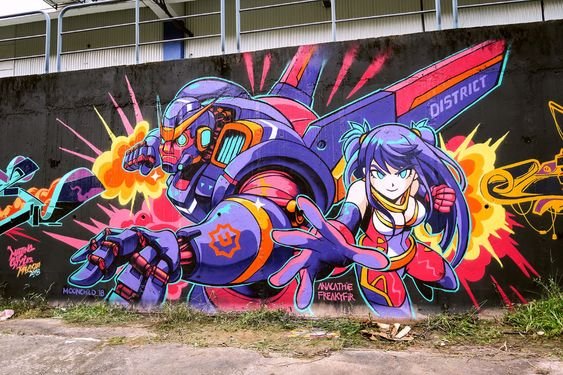
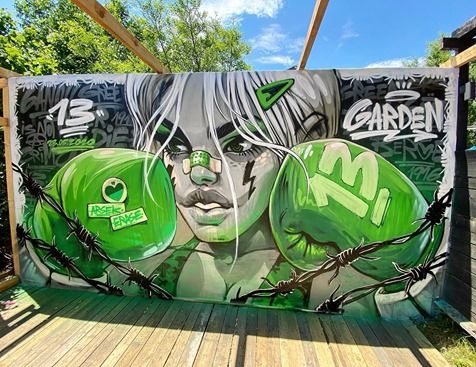
Furthermore, the rise of social media platforms played a crucial role in popularizing graffiti art in Japan. Artists could now share their work with a global audience, gaining recognition and support from art enthusiasts around the world. This newfound exposure not only boosted the confidence of Japanese graffiti artists but also encouraged them to push the boundaries of their creativity.
Despite the growing acceptance of graffiti as an art form, there are still challenges that artists face in Japan. The strict regulations and laws surrounding public spaces make it difficult for graffiti artists to find legal walls to showcase their work. However, this has not deterred the passionate and determined artists who continue to find innovative ways to express themselves.
In conclusion, the evolution of graffiti art in Japan is a testament to the power of creativity and the ability of art to transcend boundaries. From its humble beginnings as an act of rebellion, graffiti has emerged as a respected and celebrated art movement in Japan. The fusion of traditional Japanese art forms, the rise of street art festivals, and the influence of social media have all contributed to the growth and recognition of graffiti as a legitimate art form. As Japan continues to embrace and nurture its vibrant street art scene, the future looks promising for graffiti artists who seek to leave their mark on the urban landscape.


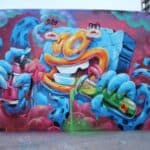





Conclusion
In conclusion, graffiti in Japan has evolved from being associated with vandalism to being recognized as a form of artistic expression. While illegal graffiti still exists, there is a growing acceptance and appreciation for street art in the country. The government and local communities have taken steps to promote legal graffiti spaces and support talented artists. Overall, graffiti in Japan reflects a unique blend of traditional and contemporary influences, contributing to the vibrant urban culture of the country.
What is Graffiti Art in Japan?
Graffiti art in Japan is a form of visual expression characterized by its vibrant colors, intricate designs, and bold messages, often found in urban environments such as city streets, alleyways, and public spaces.
What are Urban Masterpieces in Graffiti Art?
Urban masterpieces in graffiti art refer to exceptional works of street art created by talented artists, showcasing creativity, skill, and innovation in their techniques and compositions.
Where can Graffiti Art be Found in Japan?
Graffiti art can be found in various cities and neighborhoods across Japan, with popular locations including Shibuya and Harajuku in Tokyo, Dotonbori in Osaka, and Nakameguro in Kyoto.
What Themes are Explored in Japanese Graffiti Art?
Japanese graffiti art explores a wide range of themes, including social commentary, pop culture references, political statements, and personal expression. It often reflects the intersection of traditional Japanese culture with contemporary urban life.
Who are Some Notable Graffiti Artists in Japan?
Some notable graffiti artists in Japan include Lady Aiko, known for her colorful and dynamic murals, Dragon76, recognized for his intricate stencil work and fantastical imagery, and AIKO, celebrated for her unique blend of Japanese and Western influences.
Is Graffiti Art Legal in Japan?
Graffiti art is generally illegal in Japan when created without permission on public or private property. However, there are designated areas and events where street art is permitted, such as graffiti parks and urban art festivals.
How is Graffiti Art Perceived in Japanese Society?
Graffiti art is often perceived differently in Japanese society, with opinions ranging from admiration for its creativity and cultural significance to concerns about vandalism and property damage. Public perception may vary depending on the context and location of the artwork.
Are There Organizations or Communities Dedicated to Graffiti Art in Japan?
Yes, there are organizations and communities dedicated to graffiti art in Japan, including street art collectives, artist-run galleries, and online platforms that promote and showcase urban art and culture.
What Impact Does Graffiti Art Have on Urban Spaces in Japan?
Graffiti art can have a significant impact on urban spaces in Japan, transforming ordinary walls and structures into vibrant works of art that contribute to the cultural identity and visual landscape of cities. It can also spark conversations, inspire creativity, and foster a sense of community among residents and visitors.
How Can Visitors Experience Graffiti Art in Japan?
Visitors to Japan can experience graffiti art by exploring city streets, alleys, and neighborhoods known for their vibrant street art scenes. Guided tours, street art maps, and urban art events offer opportunities to discover and appreciate the diverse range of graffiti art in the country.

[…] thanks to Philippe Burty. He coined Japonisme, marking a big cultural shift. This movement saw Japanese art Styles influence Western culture deeply. Japan opened its ports in 1853. This let its art deeply […]